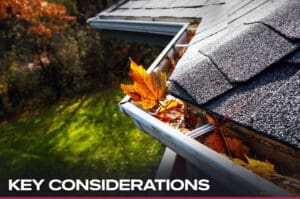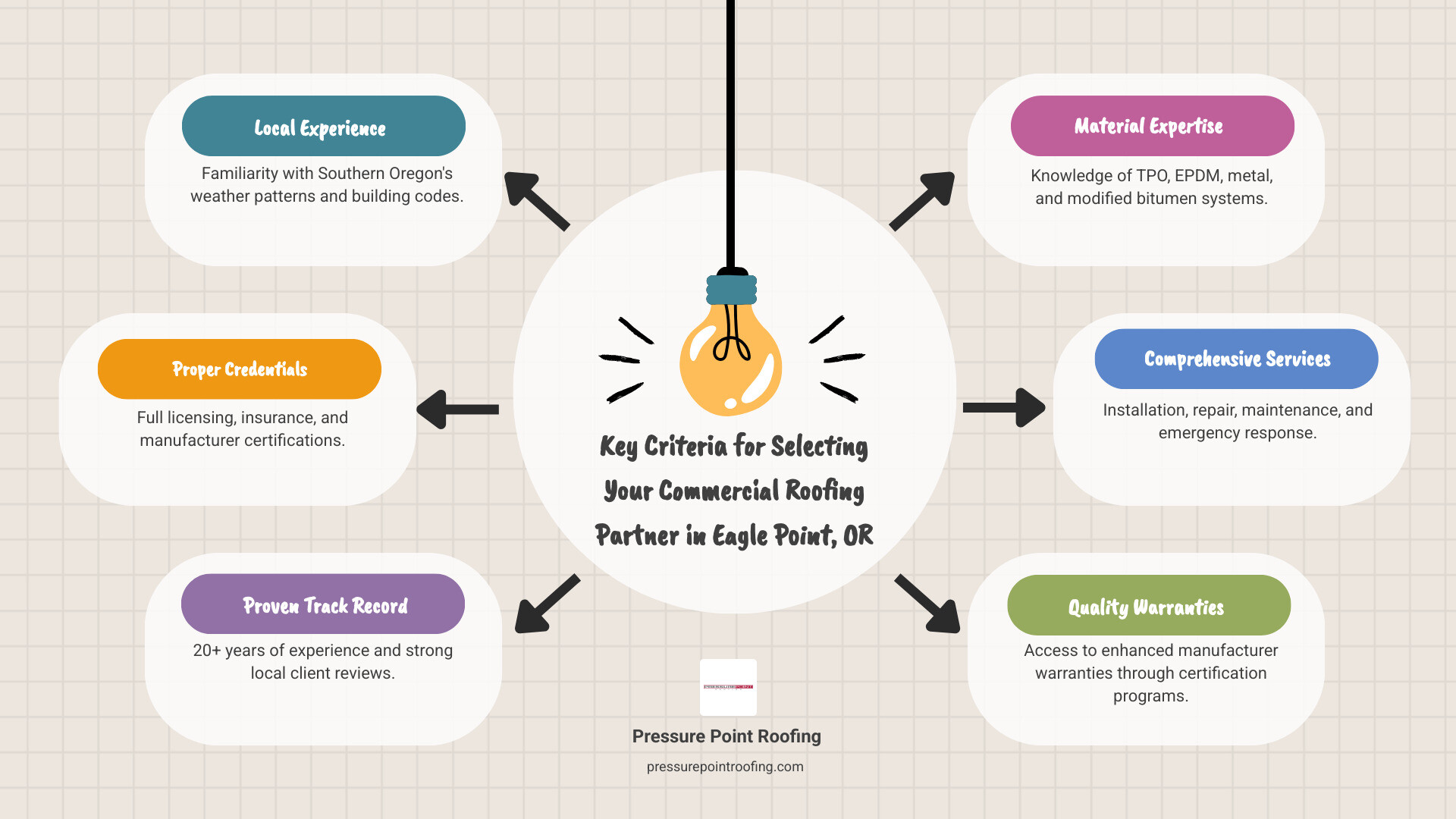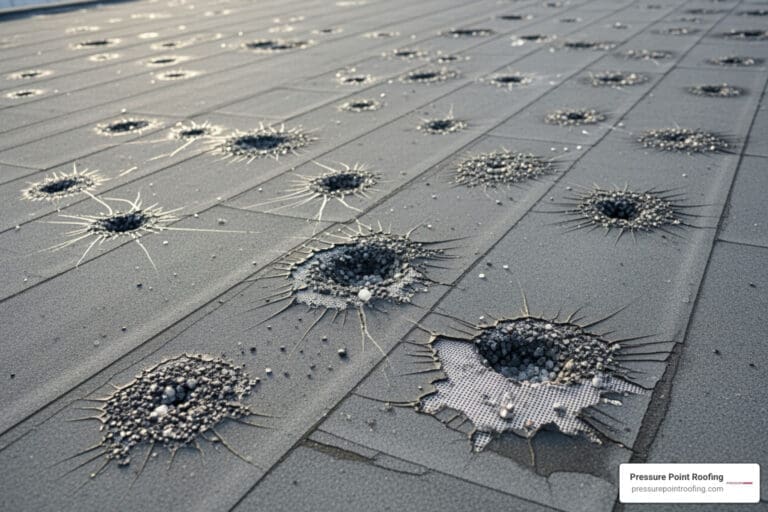Considerations for Roofing for a House in the Trees
Southern Oregon is known for its stunning, tree-lined landscapes, and many homeowners choose to live in wooded areas to enjoy this natural beauty. However, the dense tree coverage poses unique challenges for maintaining the longevity of a roof. If your home is in a heavily forested region, like many of the areas we service at Pressure Point Roofing, it’s essential to select a roofing system that can withstand the demands of such an environment. As a company with extensive experience in residential and commercial roofing in Southern Oregon, we understand the specific needs of structures in forested regions. Here’s what you need to know about roofing for a house in the trees–whether you need a new roof or just want to maintain it properly.
Key Considerations for Purchasing and Maintaining a Roof in a Highly Wooded Area
 Selecting the Best Material for Durability and Protection
Selecting the Best Material for Durability and Protection
The material you choose is one of the most important factors in selecting a roof for your wooded property. Not all roofing materials are created equal, and in an environment where your home is exposed to falling branches, excess moisture, and debris, it’s important to select a material that offers superior protection.
Metal Roofing: Metal roofing is one of the most durable and recommended options for homes in heavily wooded areas. It is highly resistant to impact from falling branches and can withstand harsh weather conditions. Metal is also fire-resistant, which is a crucial feature for homes near forests, as wildfires are a concern in Southern Oregon.
Asphalt Shingles: High-quality asphalt shingles are a versatile and budget-friendly option. Pressure Point Roofing offers options with built-in resistance to algae, moss, and mold, which are essential features for homes under tree cover. Look for shingles with a Class 4 impact rating, which indicates they are more resistant to the impact of debris.
Slate or Tile Roofing: For homeowners seeking longevity and a classic look, slate or clay tile roofing can offer excellent durability. However, these materials can be more expensive and heavy, so ensuring your home can support them structurally is essential. Tile and slate are also fire-resistant, which adds another layer of protection.
Consider Fire Resistance
Fire safety is a significant consideration for roofing for a house in the trees, where dry conditions in the summer months can increase wildfire risks. In Southern Oregon, we’re all too familiar with the damage wildfires create. At Pressure Point Roofing, we advise selecting materials with a Class A fire rating—the highest rating for fire resistance. Metal, clay, concrete tiles, and certain treated shingles fall into this category and can help protect your home in case of a fire.
Structural Design for Better Debris Management
Homes in wooded areas often receive significant amounts of debris, including leaves, pine needles, and branches. When designing or selecting a new roof, it’s important to consider how the slope and style will affect debris accumulation.
Steep Roof Pitch: A steeper roof can help shed debris more effectively than a flatter roof. A high-pitched roof allows leaves and branches to slide off more easily, preventing buildup that could trap moisture and lead to mold growth or roof damage.
Gutter Systems: A reliable gutter system with leaf guards is critical for homes surrounded by trees. Installing gutter guards prevents clogging from falling debris and ensures that water is channeled away from your home’s foundation and roofing materials.
Ventilation and Insulation: Essential for Longevity
You might not think about the ventilation and insulation in your attic space as factors impacting your roofing, but they are. If you haven’t inspected the quality of these structural elements, you could be overlooking essential strategies for extending the life of your roof.
A well-ventilated roof is crucial in maintaining the longevity of your roofing system, especially in forested areas where moisture can be an issue. Proper ventilation prevents the buildup of heat and moisture, which can cause premature wear on roofing materials.
Proper insulation, in addition to ventilation, helps regulate the temperature inside your home, preventing condensation in the attic space. This is particularly important in wooded areas, where shade and moisture can combine to create the perfect environment for mold and rot. Learn more about the benefits of attic ventilation here.
Tree Proximity and Pruning
Another key consideration when living in a forested area is the proximity of trees to your home. While their shade can help keep your home cool in the summer, overhanging branches can be a serious hazard during storms or high winds. Falling branches can damage your roof, puncture shingles, or dislodge materials, leading to leaks or structural damage.
At Pressure Point Roofing, we recommend regular tree trimming to minimize the risk of damage to your roof. Keeping branches at least 10 feet away from the roofline reduces the chances of debris accumulation and the risk of damage from falling limbs. Additionally, trimming trees prevents pests like squirrels or raccoons from gaining easy access to your roof and attic.
Maintenance Recommendations: Keeping Your Roof in Top Shape
Maintaining a roof in a highly wooded area requires proactive care to ensure it stays in good condition. Here are some essential maintenance tips:
1. Debris Removal: Regularly removing debris is one of the most important aspects of maintaining a roof in a wooded area. Accumulated leaves, pine needles, and branches can trap moisture, leading to moss growth, mold, and even rot. Use a roof rake or hire a professional to clear debris regularly.
2. Moss and Algae Prevention: In Southern Oregon’s damp climate, moss and algae are common problems, particularly in shaded areas. Many roofing materials Pressure Point Roofing installs have algae-resistant features, but additional treatments can be applied to prevent moss buildup. Copper or zinc strips can be installed along the roofline to help inhibit growth.
3. Regular Roof Inspections: Scheduling regular roof inspections, especially after storms, ensures that any damage from falling debris is promptly addressed. Our team at Pressure Point Roofing conducts comprehensive inspections to catch minor issues before they turn into major repairs.
4. Gutter Maintenance: Keeping gutters clean ensures proper drainage and prevents water damage. Install gutter guards to prevent clogging, and clean them out at least twice a year. Water that backs up due to clogged gutters can cause leaks and extensive roof damage.
5. Monitor for Wildlife Activity: Another element many homeowners who ask for advice about roofing for a house in the trees often overlook is the abundant wildlife in forested areas. Living in a wooded area means your roof may become a target for wildlife, including birds, squirrels, and raccoons. Check for signs of wildlife activity, such as nests or gnawing, and seal any entry points to your attic or roof structure to prevent pests from causing damage.
We Are Your Trusted Partner for Roofing for a House in the Trees
Living in a highly wooded area presents unique challenges for your roof, but with the right materials, design, and maintenance routine, you can ensure your home stays protected for years to come. At Pressure Point Roofing, we specialize in helping homeowners in Southern Oregon select the best roofing options for their specific environments. Whether you need a new roof installation, repairs, or maintenance, our team of experienced professionals is here to help you safeguard your home from the elements. Contact us today to learn how we can assist with your roofing needs in Southern Oregon’s beautiful yet demanding landscape.
Schedule a Consultation
By submitting this form, I agree to receive calls and text messages (including those sent using automated technology) from Pressure Point Roofing, LLC and its representatives at the number provided. Message and data rates may apply. Message frequency may vary. Consent is not required as a condition of purchase. Reply STOP to unsubscribe at any time.
Related Content
Partners and Awards










 Selecting the Best Material for Durability and Protection
Selecting the Best Material for Durability and Protection

